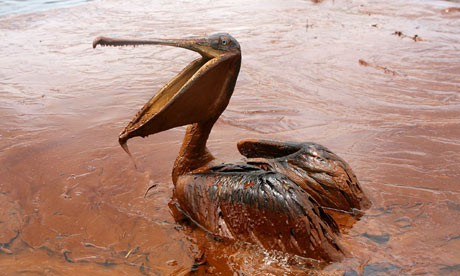BP has accused Halliburton of destroying damaging evidence relating to last year's Gulf of Mexico oil spill.
In a court filing, BP has alleged that the US oil services firm of intentionally destroying evidence about possible problems with its cement slurry poured into the deep-sea Macondo well about 100 miles (160 km) off the Louisiana coast. An oil well must be cemented properly to avoid blowouts.
Also in the documents filed in a New Orleans federal court, BP accuses Halliburton of failing to produce incriminating computer modelling evidence.
BP asked a US judge to penalise Halliburton and order a court-sponsored computer forensic team to recover the modelling results.
Halliburton has told media outlets that the accusations are untrue.
The allegations in the 310-page motion add to a showdown among BP and the contractors Halliburton and Transocean over blame in the Deepwater Horizon blast in April 2010, which killed 11 workers and led to 206m US gallons (780m litres) of crude oil escaping into the Gulf of Mexico. So far, BP, the majority owner of the Macondo well, has footed the bill for the emergency response and cleanup.
Also involved are Anadarko Petroleum and Cameron International.
The first trial over the disaster is scheduled to start 27 February in New Orleans. It is expected to last three months and determine the liability of each company involved in drilling the Macondo well. There will be other phases over cleanup costs, punitive damages and other claims.
US federal and independent investigations into the disaster have found fault in Halliburton's cementing because it failed to properly plug the well. The firm used a foamy cement slurry.
In Monday's court filing, BP alleges that Halliburton employees discarded and destroyed early test results they performed on the same batch of cement slurry used in the Macondo well during an internal investigation into the disaster.
BP said Halliburton's chief cement mixer for Gulf projects testified in depositions that the cement slurry seemed "thin" to him but that he chose not to write about his findings to his bosses out of fear he would be misinterpreted.
"I didn't want to put anything on an email that could be twisted, and turned," Rickey Morgan, the Halliburton cement expert, said in depositions. He worked at a laboratory in Duncan, Oklahoma.
"Upon reviewing these latest testing results, Halliburton employees destroyed records of the testing as well as the physical cement samples used in the testing," BP alleged.









